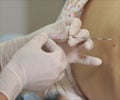A new study reveals that though the retention of guidewires used to place central venous catheters (CVCs) could be prevented, the complication nevertheless continues to happen.

'Never Events' Should Never Happen…But Still Do
Dr Vannucci and coauthors report on four cases of retained guidewires after CVC placement. Guidewires help in placing CVCs, which are widely used for patient monitoring, fluid or drug administration, and other essential purposes. All four patients underwent CVC placement during complex surgeries such as lung transplantation. The presence of the guidewire was missed on routine postoperative x-rays, and went unrecognized for up to two days after surgery.
Dr Vannucci and colleagues analyzed each case in detail to identify potential contributing factors. Retained guidewires are regarded as "sentinel" safety problem or "never event"—they should never occur as long as routine precautions are followed.
All four patients became unstable during surgery, requiring "urgent and complex" procedures. In two cases, there was confusion related to the use of two different guidewires.
Another contributing factor was "inattention blindness"— because of the patients' unstable condition, supervising doctors were distracted from ensuring that residents assisting in the operating room followed proper steps in guidewire and CVC placement. "We suggest that distraction of the clinicians and task interruptions resulted in unrecognized deviations from proper technique, which resulted in intravascular guidewire loss," Dr Vannucci and coauthors write.
Advertisement
After the first two cases, steps were introduced to prevent further incidents, including a mandatory training program for residents. Despite these changes, a third event occurred two years later. A "pop-up" reminder regarding guidewire removal was introduced into the electronic medical record—yet the fourth case occurred the following year.
Advertisement
In an accompanying editorial by Drs Robert B. Schonenberger and Paul G. Barasch of Yale University School of Medicine applaud the authors' courage in sharing their experience with and response to preventable medical errors. They warn that CVC insertion should never be regarded as a "mundane, routine, or commonplace" technique.
In a separate editorial, Drs Jeffrey Green and John Butterworth of Virginia Commonwealth University emphasize the need to "re-engineer the process" of CVC placement. They conclude, "Only after we adopt systems approaches to counter the failure modes present in many of the high-risk activities in anesthesiology will we begin to move these sentinel events into the 'never' category."
Source-Eurekalert








